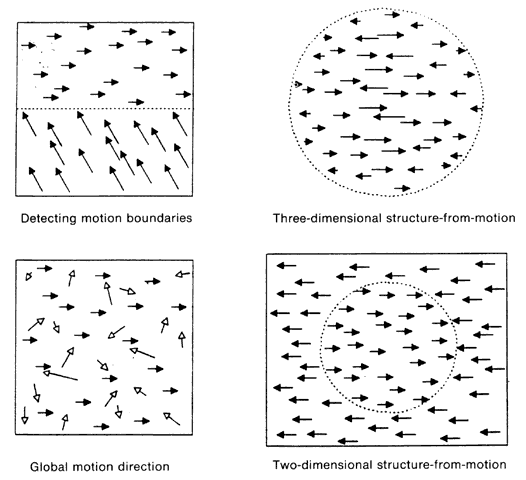

|
| Fig. 15. Random-Dot Tests of Motion Perception. In each of these four diagrams the length and direction of arrows represent the speed and direction of a moving dot, and dotted lines are imaginary. Motion boundaries are detected when two regions with differing motion are seen as distinct. Perception of global motion direction is tested with a display containing a mixture of coherently moving signal dots (black arrows) and randomly moving noise dots (white arrows). For three-dimensional structure, a hollow sphere is perceived from the distribution of dots moving at different speeds across its apparent surface. Two-dimensional structure requires detection of motion boundaries between the object and its background. |